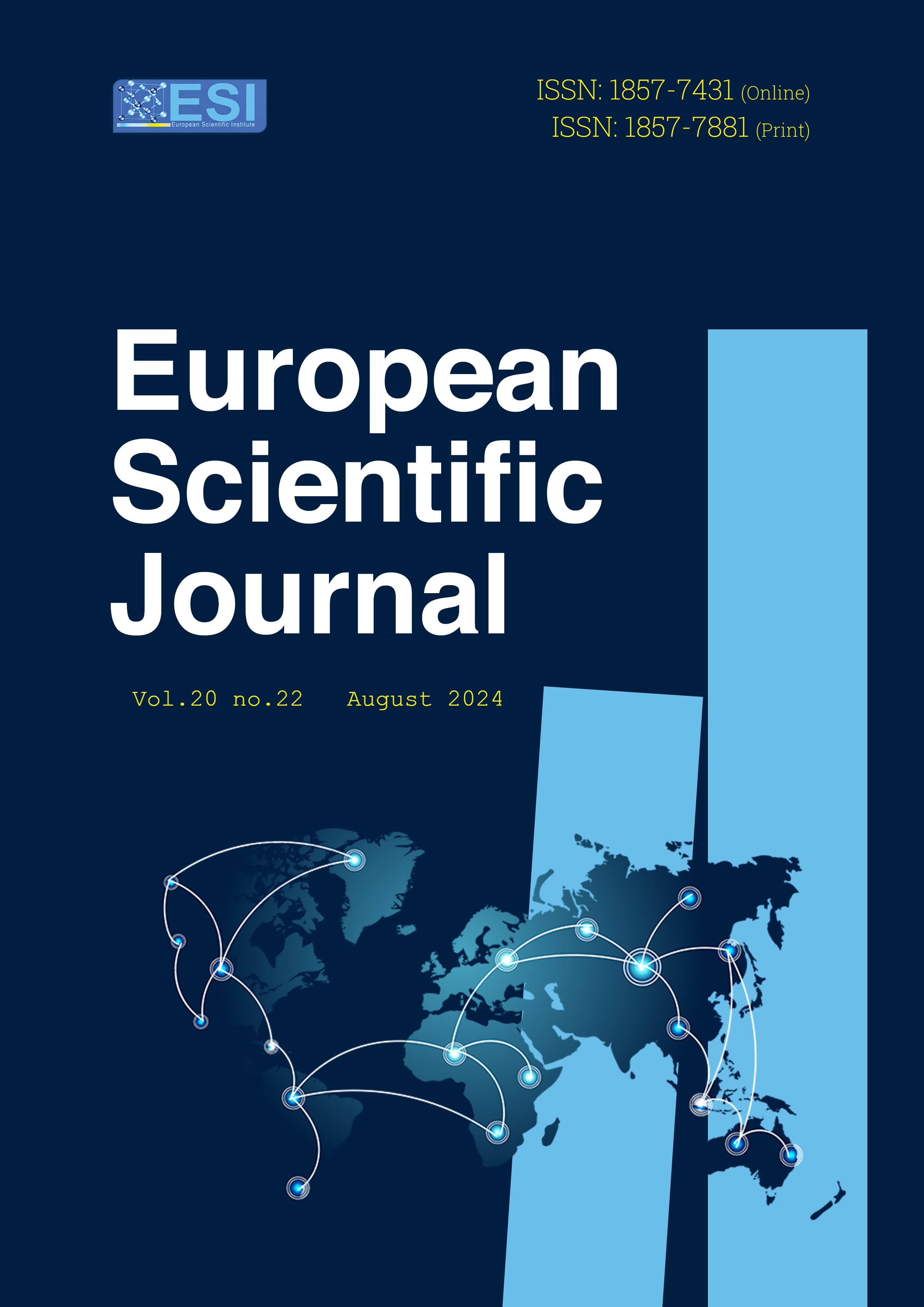Effect of Capital Adequacy on Operational Efficiency of Commercial Banks in Kenya
Abstract
This study investigates the impact of capital adequacy on the operational efficiency of Kenyan banks, highlighting its importance for financial stability and risk management using a two-step analytical approach: first, Stochastic Frontier Analysis was used to determine operational efficiency scores for each bank; second, a panel Generalized Method of Moments (GMM) regression model assessed the relationship between these scores and capital adequacy. The study employed a panel GMM Method, accounting for individual and time-specific effects as well as endogeneity and correlation biases. The study concentrated on data from 2008 to 2022, from verified audited financial statements from the Central Bank of Kenya and the respective banks' websites. The study revealed a positive relationship between capital adequacy and operational efficiency. Specifically, increased capital adequacy was associated with a 10.32% improvement in operational efficiency. The study also found that market structure plays a significant role in this relationship. Based on these findings, policymakers should adopt comprehensive strategies focusing on stringent capital adequacy regulations to enhance bank performance and stability.
Downloads
Metrics
PlumX Statistics
References
2. Allen, F., & Santomero, A. M. (1997). The theory of financial intermediation. Journal of banking & finance, 21(11-12), 1461-1485.
3. Altunbas, Y., Carbo, S., Gardener, E. P., & Molyneux, P. (2007). Examining the relationships between capital, risk and efficiency in European banking. European financial management, 13(1), 49-70.
4. Ayadi, R., Naceur, S. B., Casu, B., & Quinn, B. (2016). Does Basel compliance matter for bank performance?. Journal of Financial Stability, 23, 15-32.
5. Chen, K. (2020). The effects of marketing on commercial banks' operating businesses and profitability: evidence from US bank holding companies. International Journal of Bank Marketing, 38(5), 1059-1079.
6. Coelli, T. J., Rao, D. S. P., O'donnell, C. J., & Battese, G. E. (2005). An introduction to efficiency and productivity analysis. springer science & business media.
7. Ding, D., & Sickles, R. C. (2018). Frontier efficiency, capital structure, and portfolio risk: An empirical analysis of US banks. BRQ Business Research Quarterly, 21(4), 262-277.
8. Fekadu, A. (2015). Bank Capital Regulation and Its Impact on Capital and Risk of Commercial Banks in Ethiopia (Doctoral dissertation, Addis Ababa University).
9. Greuning, H. V., & Bratanovic, S. B. (2009). Analyzing banking risk.
10. Khalifaturofi'ah, S. O. (2023). Cost efficiency, innovation and financial performance of banks in Indonesia. Journal of Economic and Administrative Sciences, 39(1), 100-116.
11. Léon, F., & Zins, A. (2020). Regional foreign banks and financial inclusion: Evidence from Africa. Economic Modelling, 84, 102-116.
12. Mendoza, R., & Rivera, J. P. R. (2017). The effect of credit risk and capital adequacy on the profitability of rural banks in the Philippines. Scientific Annals of Economics and Business, 64(1), 83-96.
13. Njeule, M. A. (2013). The effects of central bank of Kenya prudential regulations on financial performance of commercial banks in Kenya (Doctoral dissertation, University of Nairobi).
14. Nyaundi, D. N. (2015). The effects of capital adequacy requirements on liquidity of commercial banks in Kenya (Doctoral dissertation, University of Nairobi).
15. Obuobi, B., Nketiah, E., Awuah, F., & Amadi, A. G. (2019). Recapitalization of banks: Analysis of the Ghana banking industry. Open Journal of Business and Management, 8(01), 78.
16. Odekina, I. I., Gabriel, A. O., & Solomon, T. T. (2019). Effect of capital adequacy, credit risk and operating efficiency on the performance of commercial banks in Nigeria. Financial Markets, Institutions and Risks, 3(1), 106-114.
17. Odunga, R. M., Nyangweso, P. M., Carter, D. A., & Mwarumba, M. (2013). Credit risk, capital adequacy and operating efficiency of commercial banks in Kenya. International Journal of Business and Management Invention, 2(9), 6-12.
18. Ogboi, C., & Unuafe, O. K. (2013). Impact of credit risk management and capital adequacy on the financial performance of commercial banks in Nigeria. Journal of emerging issues in economics, finance and banking, 2(3), 703-717.
19. Pradhan, S., & Shah, A. K. (2019). Credit risk management of commercial banks in Nepal. Journal of business and social sciences research, 4(1), 27-37.
20. Ramalho, E. A., Ramalho, J. J., & Henriques, P. D. (2010). Fractional regression models for second stage DEA efficiency analyses. Journal of Productivity Analysis, 34, 239-255.
21. Saunders, M., Lewis, P., & Thornhill, A. (2009). Research methods for business students. Pearson education.
22. Sentero, D. R. (2013). The effect of capital adequacy requirements on the efficiency of commercial banks in Kenya (Doctoral dissertation, University of Nairobi).
23. Siddik, M. N. A., & Kabiraj, S. (2019). Effects of Capital Adequacy on Operational Efficiency of Banks: Evidence from Bangladesh. In Advances in Management Research (pp. 91-99). CRC Press.
24. Siddik, M. N. A., Ahsan, T., & Kabiraj, S. (2019). Does financial permeation promote economic growth? Some econometric evidence from Asian countries. Sage Open, 9(3), 2158244019865811.
25. Wanjagi, A. J. (2018). Effect of credit risk management practices on performance of commercial banks in Kitengela, Kenya (Dissertation, KCA University).
26. Were, M., Kamau, A., Sichei, M., & Kiptui, M. (2013). A theoretical framework for Kenya’s central bank macro econometric model. Africa growth initiative working paper.
Copyright (c) 2024 Jedidah Wanjagi, Tabitha Nasieku, Olanrewaju Fatoki

This work is licensed under a Creative Commons Attribution 4.0 International License.








